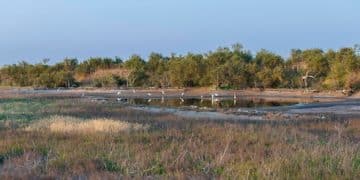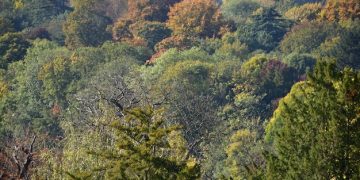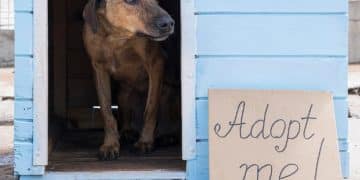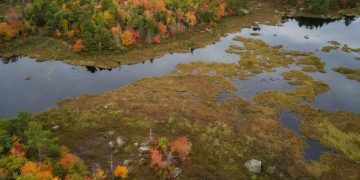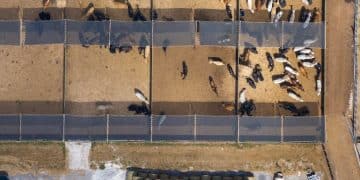Building Effective Conservation Partnerships: Government and NGOs
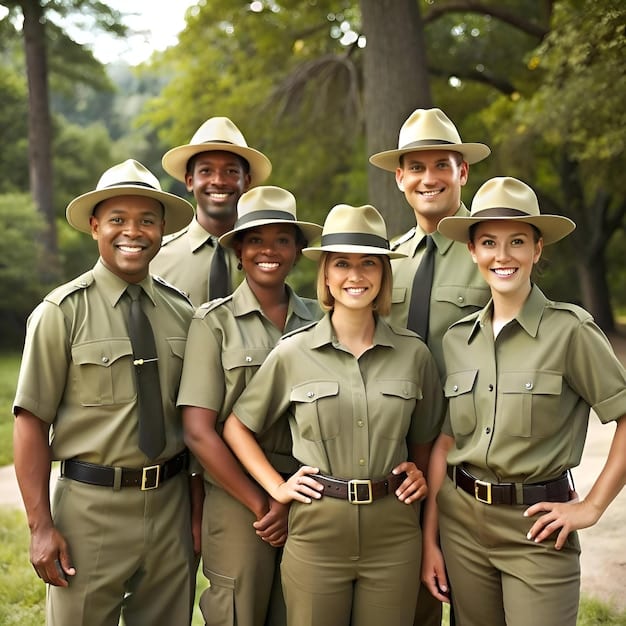
Practical solutions for wildlife conservation involve building effective partnerships between government agencies and conservation organizations, pooling resources and expertise to achieve shared goals such as habitat preservation and endangered species protection.
Wildlife conservation is a critical endeavor, and achieving meaningful progress often requires collaboration. This article explores practical solutions for building effective partnerships between government agencies and conservation organizations, offering insights and strategies to foster successful collaborations.
Understanding the Importance of Collaboration in Wildlife Conservation
Wildlife conservation is a complex challenge that often requires the combined expertise and resources of government agencies and conservation organizations. Collaboration between these entities can lead to more effective and sustainable conservation outcomes. Successfully implemented partnerships can bridge gaps, enhance project efficiency, and address conservation issues comprehensively.
Why Government and NGOs Need to Work Together
Government agencies typically have the regulatory authority and financial resources to implement large-scale conservation initiatives. Conservation organizations, on the other hand, offer specialized scientific expertise and on-the-ground knowledge of specific ecosystems and species. Combining these strengths can result in well-informed and impactful conservation strategies.
Benefits of Effective Partnerships
When government agencies and conservation organizations work together, the benefits can be substantial. These include increased funding opportunities, improved public awareness and support for conservation efforts, and a more holistic approach to addressing complex conservation challenges.
- Enhanced resource pooling for projects
- Greater implementation of conservation strategies
- Improved monitoring and evaluation processes
- Increased community involvement and support
In conclusion, a collaborative approach is vital for achieving sustainable wildlife conservation. By pooling resources and expertise, government agencies and conservation organizations can significantly enhance their impact and reach common goals.
Identifying Common Goals and Objectives
The foundation of any successful partnership between government agencies and conservation organizations lies in identifying common goals and objectives. When both parties share a clear understanding of what they aim to achieve, the collaboration is more likely to be productive and yield positive outcomes. Aligning objectives ensures that all efforts are directed toward a shared vision, minimizing conflicts and maximizing efficiency.

Strategies for Aligning Objectives
To ensure alignment, it’s essential to conduct thorough discussions and planning sessions that involve all stakeholders. This process should include a review of existing conservation priorities, an assessment of available resources, and the identification of specific, measurable, achievable, relevant, and time-bound (SMART) goals.
Developing a Shared Vision
Creating a shared vision involves articulating the long-term outcomes that both government agencies and conservation organizations hope to achieve. This vision serves as a guiding principle for the partnership, helping to keep all involved focused on the ultimate objectives.
- Regular meetings to discuss progress and challenges
- Transparent communication channels for sharing information
- Jointly developed strategic plans with clear milestones
In summary, identifying common goals and establishing a shared vision are critical steps in building effective partnerships. These steps ensure that both government agencies and conservation organizations are working towards the same objectives, increasing the likelihood of success in wildlife conservation efforts.
Establishing Clear Roles and Responsibilities
Once common goals and objectives are identified, it is crucial to establish clear roles and responsibilities for each partner. A well-defined division of labor helps to prevent duplication of efforts, ensures accountability, and promotes efficiency within the partnership. Clear roles and responsibilities also foster trust and mutual respect, as each partner understands their contribution and how it fits into the overall conservation strategy.
Defining Roles in the Partnership
Defining roles involves specifying who will be responsible for different aspects of the conservation project. This may include tasks such as data collection, research, fundraising, advocacy, and community engagement. It is important to consider the strengths and expertise of each partner when assigning roles.
Creating a Responsibility Matrix
A responsibility matrix is a useful tool for documenting the roles and responsibilities of each partner. This matrix should clearly outline who is responsible, accountable, consulted, and informed (RACI) for each task or deliverable.
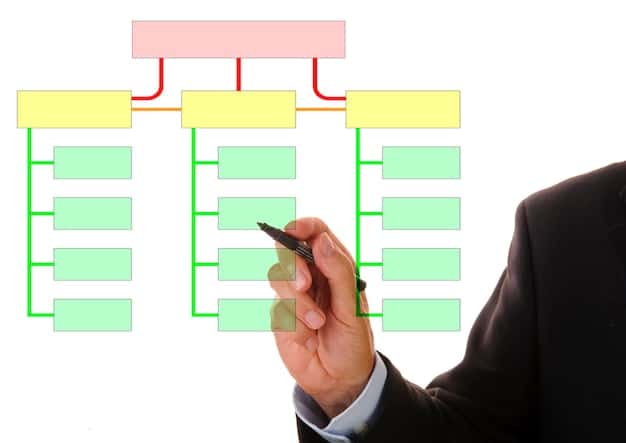
- Detailed project plans with assigned responsibilities
- Regular progress reports to track task completion
- Designated points of contact for each partner
In conclusion, establishing clear roles and responsibilities is a key element of successful partnerships. A well-defined division of labor promotes efficiency, accountability, and trust, contributing to more effective wildlife conservation outcomes.
Building Trust and Maintaining Open Communication
Trust and open communication are the cornerstones of any successful partnership. Without trust, partners may be hesitant to share information, delegate tasks, or collaborate effectively. Open communication, on the other hand, ensures that all partners are kept informed of progress, challenges, and changes in the conservation project.
Strategies for Building Trust
Building trust involves demonstrating reliability, integrity, and respect. This can be achieved through consistent follow-through on commitments, transparent decision-making processes, and active listening to the concerns and perspectives of all partners.
Promoting Open Communication
Open communication requires establishing clear channels for sharing information and providing regular updates. This may include regular meetings, email newsletters, shared online platforms, and informal conversations. It is important to create a culture of open dialogue where partners feel comfortable expressing their opinions and concerns.
- Regularly scheduled meetings for updates and discussions
- Establishment of clear communication protocols
- Creation of a shared online platform for document sharing
In summary, building trust and maintaining open communication are vital for fostering strong and productive partnerships. These elements create a supportive environment where government agencies and conservation organizations can collaborate effectively to achieve their shared conservation goals.
Securing and Managing Funding for Collaborative Projects
Funding is often a critical factor in the success of wildlife conservation projects. Collaborative projects between government agencies and conservation organizations can be more competitive for funding opportunities, as they demonstrate a broader base of support and a more comprehensive approach to conservation. Securing and managing funding effectively requires careful planning, transparent financial management, and a clear understanding of the funding landscape.
Identifying Funding Opportunities
Identifying funding opportunities involves researching potential sources of funding, such as government grants, private foundations, corporate sponsorships, and individual donors. It is important to align the project goals with the funding priorities of each potential source.
Developing a Budget and Managing Finances
Developing a detailed budget is essential for managing finances effectively. The budget should outline all expected costs, including personnel, equipment, travel, and administrative expenses. Transparent financial management practices, such as regular financial reports and audits, are also crucial for maintaining trust and accountability.
- Joint fundraising efforts to leverage resources
- Transparent financial reporting to all partners
- Designated financial managers for each organization
In conclusion, securing and managing funding effectively is crucial for the success of collaborative conservation projects. By identifying funding opportunities, developing detailed budgets, and maintaining transparent financial management practices, government agencies and conservation organizations can ensure that their projects have the resources they need to achieve their goals.
Evaluating the Success and Impact of Partnerships
Evaluating the success and impact of partnerships is essential for determining whether the collaboration is achieving its intended goals and for identifying areas for improvement. A thorough evaluation process provides valuable feedback that can be used to refine strategies, strengthen relationships, and enhance the overall effectiveness of the partnership. Evaluation should be an ongoing process, with regular assessments conducted throughout the project lifecycle.
Establishing Evaluation Metrics
Establishing evaluation metrics involves identifying the key indicators that will be used to measure the success of the partnership. These metrics should be aligned with the project goals and objectives, and should be specific, measurable, achievable, relevant, and time-bound (SMART).
Conducting Regular Assessments
Regular assessments should be conducted to track progress towards the established metrics. This may involve collecting data, conducting surveys, interviewing stakeholders, and reviewing project documents. The results of the assessments should be shared with all partners, and used to inform decision-making.
- Regular reviews of project milestones and goals
- Analysis of quantitative and qualitative data
- Involvement of external evaluators for objective feedback
In summary, evaluating the success and impact of partnerships is a critical step in ensuring that the collaboration is achieving its intended goals. By establishing evaluation metrics, conducting regular assessments, and using the results to inform decision-making, government agencies and conservation organizations can maximize the effectiveness of their partnerships and achieve lasting conservation outcomes.
| Key Point | Brief Description |
|---|---|
| 🤝 Collaboration | Essential for pooling resources and expertise. |
| 🎯 Shared Goals | Align objectives for effective conservation. |
| 🗣️ Communication | Maintain open lines for project success. |
| 💰 Funding | Secure resources through joint fundraising. |
[Frequently Asked Questions]
▼
Partnerships combine diverse expertise and resources, allowing for broader impact and more effective conservation strategies than individual efforts could achieve.
▼
Through open discussions, mutual planning sessions, and establishing common, measurable objectives, government agencies and NGOs can ensure aligned conservation goals.
▼
Open and transparent communication is crucial for addressing challenges, sharing updates, and fostering trust, ultimately contributing to a successful partnership.
▼
Joint fundraising efforts, grant applications that leverage partnership strengths, and transparent financial management bolster the ability to secure and manage funding effectively.
▼
Success is gauged by SMART metrics aligned with project objectives, regular assessments, and the involvement of stakeholders. These elements reveal areas for improvement and refine strategies.
Conclusion
In conclusion, building effective partnerships between government agencies and conservation organizations is a practical and necessary step towards achieving sustainable wildlife conservation. By focusing on common goals, establishing clear roles, building trust, and securing adequate funding, these partnerships can create a powerful force for protecting our planet’s biodiversity.

